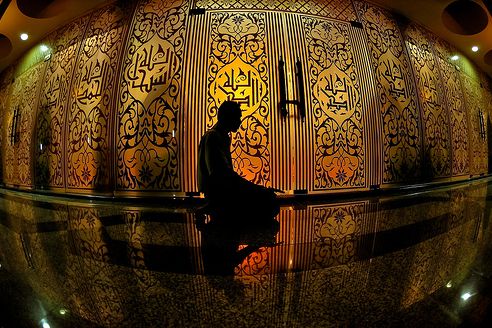
Physical or Health Benefits of Namaz (Salat)

Salat (Namaz) is the 2nd pillar of Islam. Salah is the spiritual activity performed by Muslims five times a day for the sake of Allah Almighty. The most beloved act of worship by Allah (SWT) is the Salah. It is considered the most commonly performed ritual act to attain closeness to Allah Almighty. It is Salah that differentiates Muslims from non-Muslims in terms of their form of worship. It is an obligation upon every Muslim and they all have to learn and perform Salat without any excuse.
Salat (Namaz) is a means of seeking forgiveness, condolence, and peace through invoking Allah’s (SWT) assistance; Namaz serves as food for the soul. The benefits of Salah (Namaz) do not end with the spiritual domain but in fact, enclose the physical domain as well. Science has enabled people to see the physical benefits of Salah as well due to which Muslims can also offer Salat in order to keep them physically healthy.

Physical Benefits of Salat (Namaz)
Below mentioned are some major physical benefits that a person can achieve by offering Salat (Namaz) five times a day.
- Ablution is compulsory before starting the prayer. So firstly we will start with the Wudu (ablution). Wudu cleanses the body 5 times a day. Staying in a constant state of cleanliness leads to healthier skin and overall healthy hygiene.
- Namaz improves body posture. Improper body posture is one of the most common things to which people search for treatment. An improper posture can occur because of various reasons dealing with the way a person walks or the kind of work he or she does. When a Muslim performs Salat (Namaz), standing in the state of Niyyah is the best exercise he/ she can have for an improved body posture. The feet of a person are evenly apart, the body is firm and straight, the hands are tied at a place which makes the backbone aligned and straight and the position of the head is looking downwards that also allows the body to loosen while being in a firm position.
- The forward bending Rukuh position is best for a person’s lower vertebrate which relaxes the lower back, hip pain, knee pain, ankle pain, and Toe pain. Ruku position helps in maintaining the flexibility of shoulders, elbow, wrist, knees, and ankles.
- The Sajadah posture of Salat can help a great deal in controlling the belly from expanding and accumulating fats. The knees and both the feet are on the ground while the head goes to the ground in such a way that a refined pressure is put on the abdominal muscle making them strong. This type of exercise is recommended for women who want to hold the fetus in the proper position. Therefore, if you wish to control your abs and make them slim then prayers five times a day is a good exercise for doing so.
- Standing posture in Qiyam ensures proper blood flow in the lower portion of the body. It is also good for strengthening the leg muscles.
- The position of Qaadah helps bring relief to the back, toes, and knees.
- The Namaz (Salat) is finished with ‘Salam’ which is an excellent exercise for the neck and vertebral column.
The above-mentioned are some of the physical or health benefits of Namaz. Those who want to take more out of Salat other than simple religious benefits, for them Salat is a complete exercise that can help to keep their body and mind healthy. The regular offering of Salah leads to endurance. May Allah Almighty make us from those who offer Salah regularly five times a day! Ameen




